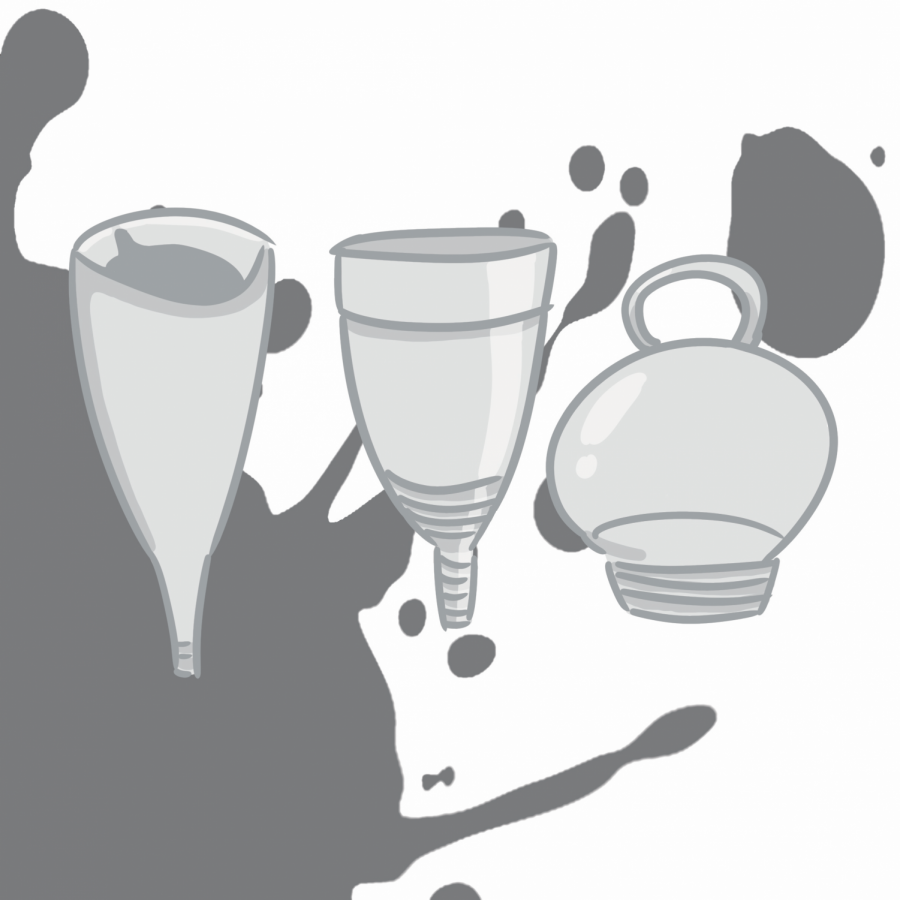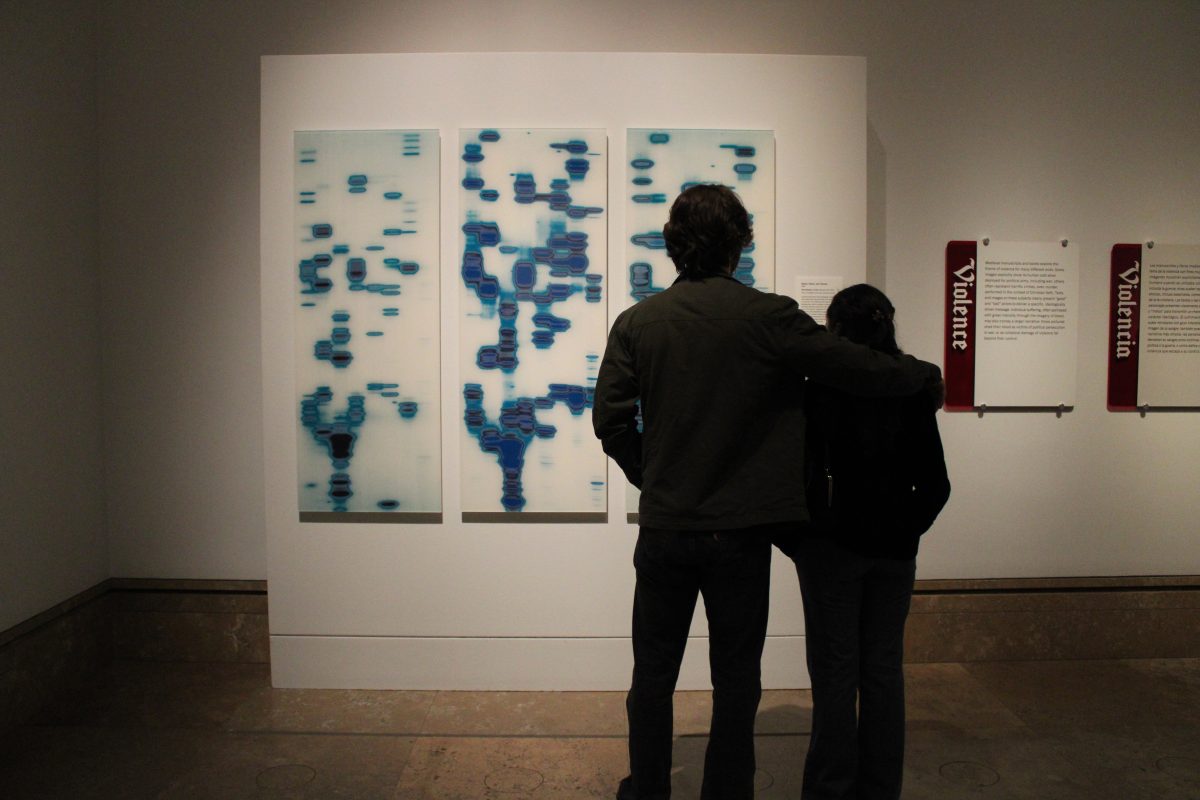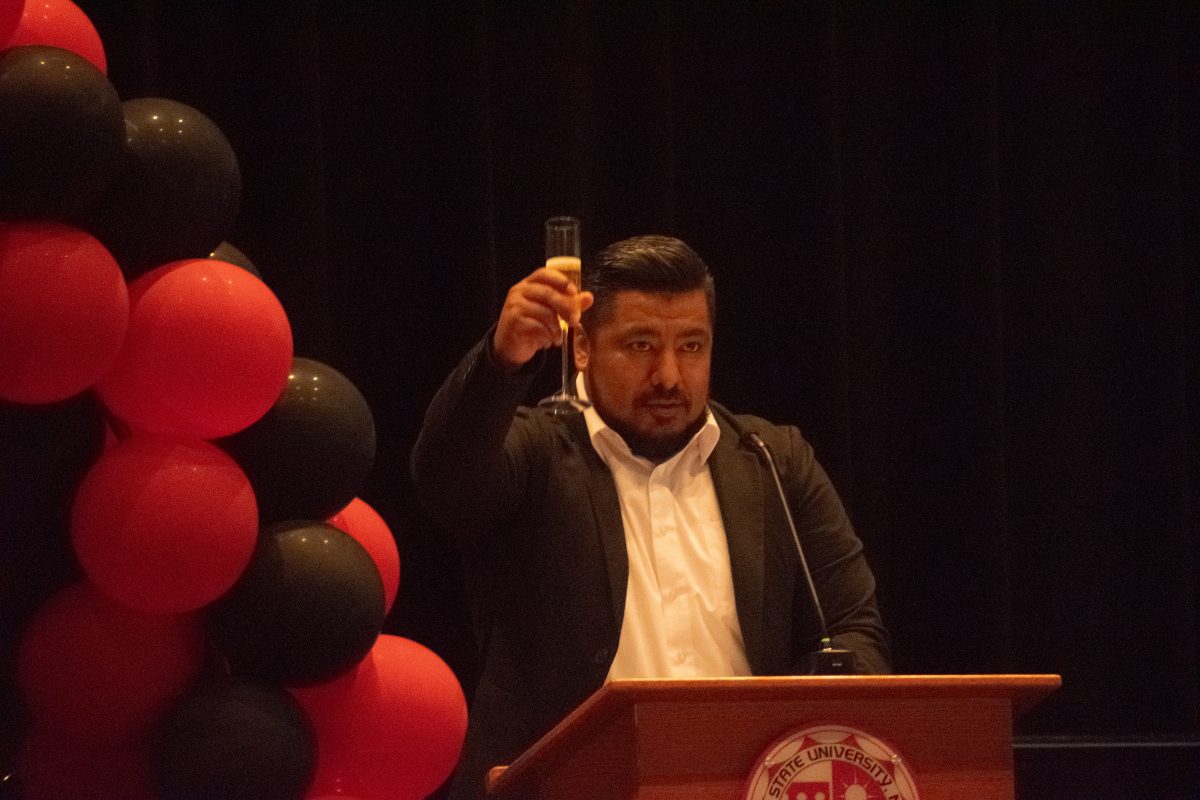An assessment done by the Royal Institute of Technology in Stockholm found that the largest contributor to global warming is the plastic used in tampons and pads, but CSUN is seeking a solution.
The bloody flyer, which is suggestive of a menstruating vagina, took weeks to be approved.
The CSUN Institute for Sustainability and the Women’s Research and Resource Center are working together to start an initiative to end the stigma surrounding menstruation. Their bloody flyer, which intended to publicize the initiative, was deemed a bad marketing strategy.
“We in the U.S. have no problem with gore and blood and films that are just dripping and oozing with disgusting things all over the place, and then we go and pay money to get scared by everything for the whole month of October,” said Shira Brown, director of the WRRC. “The second we attach blood to women all of a sudden, we’re disgusted by it. We don’t want to talk about it. We’re embarrassed.”
Brown and the CSUN Institute for Sustainability want to end the stigma surrounding menstruation, so people can openly discuss all sides of it — like the environmental impact.
Part of the initiative is an event in the University Student Union Grand Salon on Nov. 5, where the WRRC and the Institute for Sustainability will be handing out free menstrual cups, showing a documentary and having a discussion panel.
“We’re trying to promote reducing the stigma around menstruation as well as the opportunities for reusable menstrual products,” said Sarah Johnson, CSUN Sustainability Program Analyst.
According to WebMD, menstrual cups have a lower risk of bacterial infection than tampons. Johnson also feels that menstrual cups are the healthier alternative because they have fewer chemicals, and Brown states that some menstrual cups can last between 10-12 years.
According to Bustle, an estimated 45 billion period-related products are thrown in the garbage every year. Many of these plastic packaged products, like pads and tampons, can take centuries to break down, according to a blog post from Harvard Business School Digital Initiative.
The blog post also believes the taboo surrounding menstruation has stunted the growth of new menstrual products.
“None of this ‘Aunt Flow came to visit me this month.’ Use the language,” said Brown. “Just have an open, honest and stigma-free conversation.”
As part of the initiative, the WRRC and Institute for Sustainability have been working with an art class that will be doing art installations around campus to raise awareness for the effort.
Leading up to the event, they will also be doing a social media campaign and have tabling opportunities where students can learn about what’s to come. On the day of the event, they will be showing the documentary “Period. End of Sentence.” by The Pad Project.
Afterwards, there will be a six person panel discussion, including someone from The Pad Project, discussing the different sides of menstruation.
Students will be asked to take a quiz that will help people find their best menstrual cup match, and which of the two sizes handed out at the event is their best option.
However, Brown says the food and toilet pantry she runs will still have pads and tampons because she recognizes some may not want to try menstrual cups yet.
“We want to just make everything available and make sure everyone has all the information so they can make an informed decision,” Brown said.












